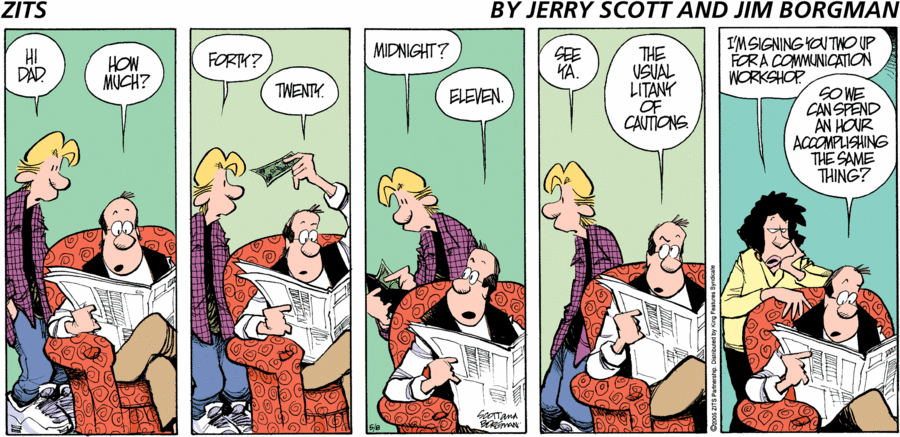
In natural dialogues, utterances rarely take the form of full-fledged sentences with a subject, a verb, objects and complements. Indeed, many utterances (called non-sentential utterances) only consist of a few words without explicit predicate, such as "yes!", "to the ships!", "never in my life", or the examples of short questions and answers in the comic strip above.
How can we represent the semantic content of such non-sentential utterances? Semantic graphs are a common type of data structure in computational semantics . However, they are typically restricted to the representation of sentence-level content. And by their very construction, the meaning of a non-sentential utterance is tightly coupled with its conversational context. Is it possible to capture such relationships in semantic graphs spanning several utterances? This is what this thesis will investigate. One possibility would be to rely on graphs capturing the dialogue state such as the recently published Dataflow approach.
This thesis topic is rather open-ended, so we will need to further circumscribe the actual thesis work during the first months. Students choosing this topic should have an interest for theoretical questions related to dialogue modelling and semantic representations. The thesis will also include empirical analyses of non-sentential utterances in dialogue corpora.
Prerequisites: Interest in dialogue modelling and computational semantics. Acquaintance with graph representations and algorithms is an advantage.